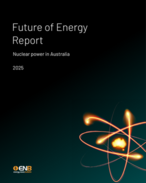This article is 18 years old. Images might not display.
The Perth-based company yesterday said it had completed testing of the middle zone at Waraga-1 and started testing the upper zone.
The middle perforated interval, from 1782m-1792.5m, flowed at a sustained average rate of 2400 barrels of oil per day (bopd) through a 36/64-inch choke, but that increased after a shut-in period to about 4200 bopd through a one-inch choke.
The quality and quantity of oil from the middle zone was about the same as that tested in the lowest zone last week – sustained flows of about 4200 bopd of light (33.8 degrees API) but waxy crude.
The top interval, from 1680m-1710m, was perforated on Monday and flowed heavier (18.5 °API) oil at a stabilised rate of 2115 bopd through a 36/64” choke.
The well was currently shut-in for a pressure buildup before a final flow period from the top zone and results were expected before the end of the week.
According to Hardman and the Ugandan Government's own geological experts, the hydrocarbon shows in Waraga-1 are already a strong indicator the oil seepage could be extensive, reaching the two other wells and far out over hundreds of kilometres.
Following the conclusion of testing at Waraga, the rig would move to the Mputa area for testing that was expected to start either late this month or early next.
“Flow rates from all zones tested to date have exceeded expectations,” Hardman managing director Simon Potter said.
“Potentially, this reduces the reserves threshold for development as commercial exploitation would require fewer wells and thus a lower capital commitment.”
Equities in Block 2 are Hardman, the operator with a 50% stake, and Tullow Oil (50%).






















